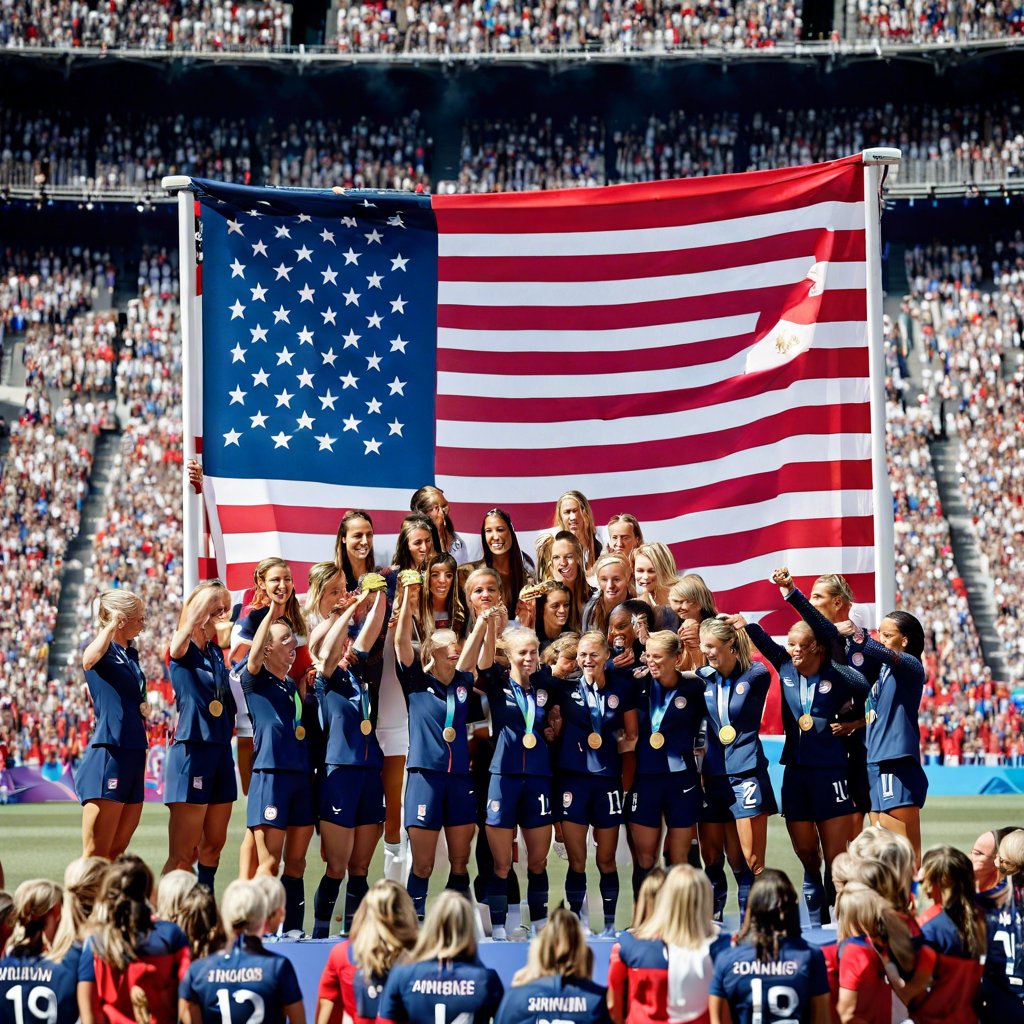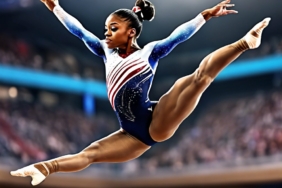Victory and Reflection: A Journey to Olympic Gold
PARIS — As the final whistle blew, signaling the end of a hard-fought match, Crystal Dunn collapsed onto her knees, overwhelmed by emotion. She pounded her fists into the grass, a release of pent-up feelings. The bench soon emptied onto the field, and the stadium erupted with cheers from fans who had eagerly awaited a fifth Olympic gold medal. Yet in that moment, Dunn was lost in her own thoughts, reflecting on the arduous journey that had brought her here.
“You think about all the sacrifices you made,” she shared. “This game is tough, but it’s not just about this game. It’s everything you’ve gone through. It’s the entire tournament, the buildup.”
For Dunn, this moment encapsulated more than just the recent months leading up to the Olympics. It was about the last year since the U.S. women’s national team faced a historically disappointing exit from the 2023 World Cup. It also represented the culmination of her experiences since she joined the senior national team in 2013 — the rosters she made, those she missed, the tournaments they triumphed in, and the many they did not. It included the highs and lows, the injuries, and the remarkable comebacks.
On that memorable evening at Parc des Princes, with sacrifices and anticipation behind her, Dunn stood proudly atop the Olympic podium, a gold medal gleaming around her neck, symbolizing all her hard work and dedication.
As the team awaited their moment of glory, they engaged in lively discussions about how to celebrate on the podium. “What should we do when we get up there? We should do something together, right?” they asked. After witnessing the German team receive their bronze medals and the Brazilians their silver, the Americans finally took their place as gold medalists. They held hands, raised them triumphantly into the air, and took a collective bow. It was not entirely in unison, a fitting reminder of the unique dynamics within a team that was still finding its rhythm after a tumultuous period.
Turning to the audience, they waved to the fans who had supported them throughout their journey, then faced forward as their names were announced one by one. Each player received their gold medal, a moment of recognition for their hard-earned success.
Off to the side, head coach Emma Hayes stood watching, her attention unwavering. The field was finally shaded from the sun that had blazed throughout the day, and Hayes, dressed in a sleek black suit, absorbed the scene. Just seventy-nine days prior, she had named this Olympic roster. Seventy-two days ago, she led her first Olympic practice. Now, they were basking in the glory of being crowned Olympic champions once again, an achievement that had eluded even more seasoned and cohesive American rosters in recent years.
That the U.S. women’s soccer team had returned to this prestigious stage was perhaps expected, but the fact that it was this particular group, under Hayes’ leadership, achieving it so rapidly was nothing short of remarkable. In just ten games at the helm, Hayes had guided the team to Olympic gold.
Reflecting on the last time the Americans stood atop the Olympic podium — during the London Games in 2012 — it’s important to note the significant changes since then. At that time, there was no National Women’s Soccer League (NWSL) in the United States, and the Women’s Professional Soccer league had announced its suspension just months prior. The youngest member of that team, 19-year-old Jaedyn Shaw, was just starting her educational journey.
Fast forward to the present, and just a year and four days before this momentous victory, the U.S. had faced an unexpected elimination in the World Cup, suffering a round of 16 loss to Sweden on penalty kicks. In the aftermath, captain Lindsay Horan pointed out that the team had not fully extracted the best from each player, citing a lack of preparation, tension, and enjoyment in their play.
After that heartbreaking episode, the landscape of the team changed dramatically. Megan Rapinoe and Julie Ertz retired, leaving a significant void. Hayes’ Olympic roster, announced last month, did not include key figures like Alex Morgan or Becky Sauerbrunn. This marked a significant transition, with only three players — Dunn, Alyssa Naeher, and Rose Lavelle — having previously participated in a major tournament final.
Amid this turnover, the new squad faced criticism as they adjusted to the changes, including three coaching shifts. However, players reported a renewed sense of joy and camaraderie under Hayes’ guidance. “This team has gone through so much,” Trinity Rodman expressed. “Different coaches, losses, just off-field challenges. To be here now with such a wonderful group and an amazing coach is incredible. I’m in awe of everyone’s hard work to reach this point.”
Rodman, just 22, was among the youngest on the roster and formed part of a dynamic attacking trio with Sophia Smith and Mallory Swanson, dubbed “Triple Espresso.” This trio reignited the offensive spark that had been missing in previous iterations of the team. During the tournament, they accounted for 11 of the team’s 12 goals, each taking turns to shine in the knockout rounds.
- Rodman scored in extra time against Japan in the quarterfinals.
- Smith followed suit with a crucial goal against Germany in the semifinals.
- Finally, Swanson found the back of the net in the finals, showcasing her determination.
In the first half of the final match, Swanson had an opportunity that she missed. When the perfect assist came through in the 57th minute, she shouted to Smith, who was in an offside position, to clear the way. “It was scary,” Smith joked later, “I didn’t see her coming until she yelled.”
Rodman had promised herself she wouldn’t cry if they won, but upon securing the gold, she broke that vow almost instantly. “I was just so happy for everyone else,” she explained. “For Naeher, who despite her incredible contributions, often goes unnoticed due to her quiet nature; for Swanson, who overcame an injury that sidelined her for 11 months, including the World Cup; and for Naomi Girma, whose steady presence on the backline has elevated everyone’s performance throughout this journey.”
The tears flowed freely as they celebrated together, cheering and embracing each other and Hayes. They even outpaced their own security to rush towards their families in the front row of the stadium, a testament to the overwhelming joy of the moment.
The American women had reclaimed their championship status. Through a journey marked by both trials and triumphs, they stood proudly on the Olympic podium, having carved out a path that was uniquely their own.
“I always believe this team can accomplish anything,” Dunn asserted. “When we’re at our best, when everything is clicking, I genuinely think we can be unstoppable. But it requires dedication. It’s about showing up every day, believing in the system, and trusting in one another.”
As they stood atop the podium, gold medals glimmering, they danced and laughed, celebrating a journey that many had doubted. Yet here they were, victorious and united, a testament to their resilience and spirit.
(Top photo: Justin Setterfield/Getty Images)
















